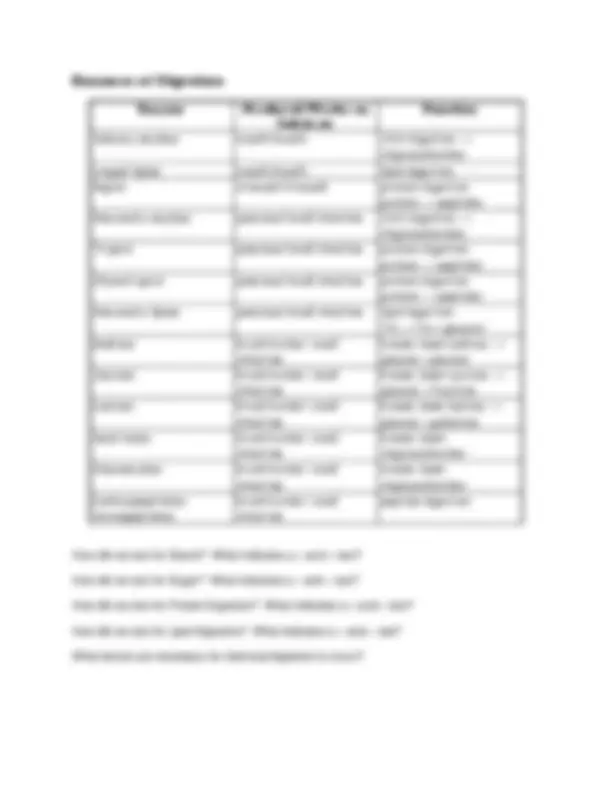



Study with the several resources on Docsity

Earn points by helping other students or get them with a premium plan


Prepare for your exams
Study with the several resources on Docsity

Earn points to download
Earn points by helping other students or get them with a premium plan
Community
Ask the community for help and clear up your study doubts
Discover the best universities in your country according to Docsity users
Free resources
Download our free guides on studying techniques, anxiety management strategies, and thesis advice from Docsity tutors
Material Type: Quiz; Class: Anatomy and Physiology II (GL); Subject: Biology; University: Harford Community College; Term: Unknown 1989;
Typology: Quizzes
1 / 3

This page cannot be seen from the preview
Don't miss anything!


BIO 204 Review Guide for Lab Quiz #
Respiratory Section:
Respiratory Volumes: Tidal volume (VT):
Inspiratory Reserve Volume (IRV): amount of air that can be inhaled in addition to the VT 1900 ml in women vs. 3300 ml in men
Expiratory Reserve Volume (ERV):
Residual Volume (RV): amount of air that remains in lungs after maximal exhalation can't get it out - keeps lungs inflated
Respiratory Capacities: Inspiratory Capacity (IC) =
Functional Residual Capacity (FRC):
Total Lung Capacity (TLC):
Vital Capacity (VC):
Dead Space (VD):
Respiratory Minute Volume (VE): RR x TV 12 brths/min x 500 ml/breath = 6L/min.
Alveolar Ventilation: RR x (VT - VD)
Pulmonary Function Tests: Spirometer:
Peak flow meter: measures the maximum rate of air movement during forced exhalation
Obstructive Pulmonary Disease:
Restrictive Pulmonary Disease:
Be able to able to label a spirometry graph and an EKG Chemical Digestion (p. 903) •catabolic process:
•hydrolysis
A. Carbohydrates (CHO) monosaccharides: glucose, fructose, galactose
disaccharides: sucrose, lactose, maltose
polysaccharides: glycogen & starch
begins in mouth: salivary amylase
continues in pancreatic alpha-amylase intestinal brush border enzymes:
dextrinase & glucoamylase:
maltase, sucrase, lactase
B. Protein: proteins are made up of polypeptides which are formed from amino acids begins in
pepsinogen activated to pepsin functions optimally
hydrolyzes
note: rennin from stomach in infants:
pancreas secretes trypsin & chymotrypsin
intestinal brush border enzymes: carboxypeptidase aminopeptidase
C. Lipids: digestion mainly occurs in small intestine mouth releases lipases to start digestion of fats
finished by lipases by pancreas Must have bile: emulsifier
triglycerides broken down into glycerol & fatty acids